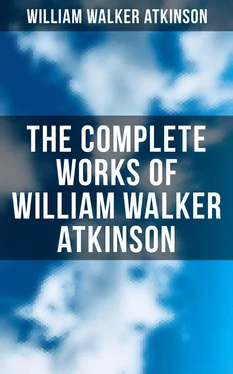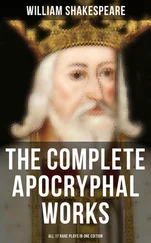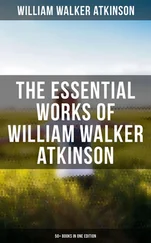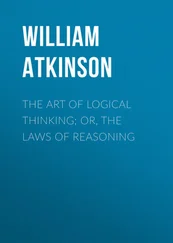Jevons says: “There is no way in which we can really assure ourselves that we are arguing safely by analogy.” Brooks says: “The probability of analogy depends upon the number of observed resemblances. Every similarity which is noticed between two objects increases the probability that the two objects resemble each other in some other property. * * * In comparing two objects, the differences as well as the similarities must be taken into consideration.”
Many persons, untrained in logical thinking, ·often mistake figurative illustrations, metaphor, etc., for forms of analogous proof. Hill says: “One who perceives many analogies is in danger of mistaking fanciful for real ones, of making a mere metaphor do duty as an argument.” Mill cites Bacon as being “equally conspicuous in the use and abuse of figurative illustration.” “George Eliot says: “O Aristotle! if you had had the advantage of being “the freshest modern” instead of the greatest ancient, would you not have mingled your praise of metaphorical speech, as a sign of high intelligence, with a lamentation that intelligence so rarely shows itself in speech without metaphor— that we can so seldom declare what a thing is, except by saying it is something else!”
Argument based upon Association has for its general principle the well-known Law of the Association of Ideas and Things. This form of argument is closely allied to what is called Circumstantial Evidence. Hyslop says: “This is a form of inductive and synthetic proof, and is that form of argument which endeavors to prove a thesis by the presence of certain signs or incidents which suggest it. * * * A man is charged with murder. We wish to prove the accusation. We find certain characteristics in the boot tracks going away from the murdered person. If we find that the boots of the accused correspond exactly to these characteristics, we have at least presumptive evidence of his guilt. If, further, we find that the accused possesses bullets or slugs like those found in the body of the murdered person, we have corroborative circumstantial evidence. Unless this can be of a large and cumulative amount or of a particular quality, it does not suffice for demonstrative proof, but only establishes a certain degree of probability. It is simply an argument from certain signs, marks, characteristics, coincidences, etc., to the probability that a given thesis is true. Whenever we argue from any given attribute or phenomenon to an unknown cause, we in fact employ the argument from circumstantial evidence * * *”
Hill says: “The force of an argument from sign (association) depends, moreover, not upon the magnitude of that which serves as a sign, but also upon the closeness of its connection with the thing signified. It matters not how trifling a circumstance is in itself if it is a link in a chain of evidence. ‘A skilful forgery is detected by an inspection of small points; a mutilated body has been identified by a peculiarity of the teeth; a murderer has been tracked by the print of the nails in his shoes.”
This form of Argument is generally associated with a Hypothesis, the associated ideas and facts, and the circumstantial evidence, serving to support or sustain the hypothesis itself. A hypothesis is: “A supposition or conjecture to account for facts or phenomena.” The probability of a hypothesis is determined by the number of facts and phenomena it will explain. The larger the number of facts and phenomena explained or accounted for by a hypothesis, the greater is held to be its degree of probability. Verification of a hypothesis is obtained by showing that it will account for all the facts and phenomena in question. Some authorities hold that more than this is required for verification, and that perfect verification exists not simply when the hypothesis will account for all the facts and phenomena, but when also there is no other possible hypothesis which will account for them. It has been often found that an entire structure of circumstantial evidence built up around a certain hypothesis will also answer to verify another, and a totally different hypothesis.
In all argument there exists what is known as the Burden of Proof, which is an obligation resting upon those stating the proposition or advancing the hypothesis. The rule in the case is expressed by the legal maxim: “He who affirms must prove.” Stephen, a celebrated authority upon Evidence, says: “The burden of proof as to any particular fact lies on that person who wishes the Court to believe in its existence, unless it is provided by any law that the burden of proving the fact shall lie on any particular person.” In common discussion, the burden of proof is also held to rest upon the one who wishes to introduce a new thing as a substitute for an established thing, or who wishes to introduce a change. What is called the Presumption usually abides with the side opposed to that upon which the Burden of Proof rests. The Burden of Proof is always a disadvantage, and the Presumption always an advantage, for obvious reasons.
Chapter XII.
Evidence and Proof
Table of Content
EVIDENCE IS defined as “the material of proof.” There is a distinction between Evidence in Law, and Evidence in Logic. The distinction is brought out in the following definitions of the two, taken from the “Encyclopædic Dictionary.”
Evidence ( in Law ): “Proof, either written or unwritten, of allegations in issue between parties. The following are the leading rules of procedure: (1) The sole object and end of evidence being to ascertain the several disputed points or facts in issue, no irrelevant evidence should be admitted. (2) The point in issue is to be proved by the party who asserts the affirmative. (3) Heresay evidence is not admitted.”
Evidence ( in Logic ): “That which makes truth evident, or renders it evident to the mind that it is truth. It is generally limited to the proof of propositions as distinguished from axioms or institutions. Evidence is of two kinds, demonstrative and probable. Demonstrative evidence is of such a character that no person of competent intellect can fail to see that the conclusion is necessarily involved in the premises. Mathematics rest upon demonstrative evidence. All the propositions of Euclid are simply deductions from the definitions, axioms being assumed and postulates granted. But in every matter involving the establishment of concrete fact bearing on human conduct, demonstrative evidence is not obtainable, and the mind must content itself with probable evidence. Even in mathematics the premises are not concrete facts, but abstract hypotheses. Probable evidence is as if one held a delicate balance in the hand, casting into one scale every atom of evidence making for a proposition, and into the other all that could be adduced against it. According as one or the other scale predominates the proposition is accepted or rejected. Probable evidence may be of all conceivable degrees, from the faintest presumption to almost perfect certainty.”
Evidence, to be strictly direct must reach one through his own senses or consciousness. It follows, then, that there can be but very little direct evidence used in an ordinary argument, and that we must of necessity fall back upon indirect evidence, or the evidence of the sense or consciousness of other persons, reaching us in the form of testimony, either verbal, written, or traditional. And, in both direct and indirect evidence, as above defined, we must always make the clear distinction between evidence of facts and the evidence of opinion, inference, interpretation, or prejudice regarding the actual facts, existing in the mind of the person experiencing them.
Testimony is the statement of the experience of another than the hearer. It may be true or false; that is, it may be a true statement of experience, or an untruth having no basis in fact, or possibly a half-truth, or truth colored with untruth. The general presumption is that testimony is true, the presumption arising from the general belief that a man will state what is true rather than what is false, particularly in absence of motive to the contrary. The reputation of a witness for falsehood tends to weaken the belief in his testimony, while his reputation for truth is likely to strengthen the belief in his veracity. But it is always remembered that even a notorious liar will sometimes tell the truth; and that an ordinarily truthful man may occasionally tell an untruth. The judgment, powers of observation, and general intelligence of the witness are also factors in determining the probable accuracy of his testimony. The subject of the testimony also has a bearing in this matter, for one will be able to testify more accurately about a subject with which he is well acquainted, than would one unfamiliar with that particular subject. The possibility of mistake or error is also taken into consideration.
Читать дальше












